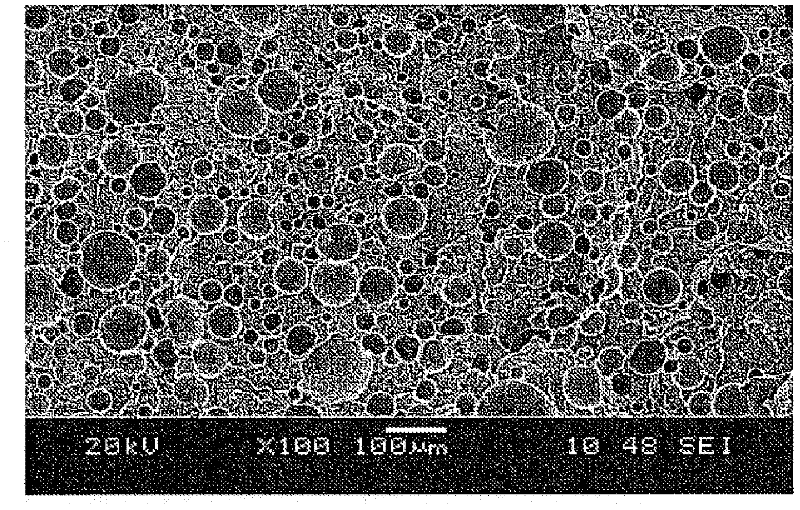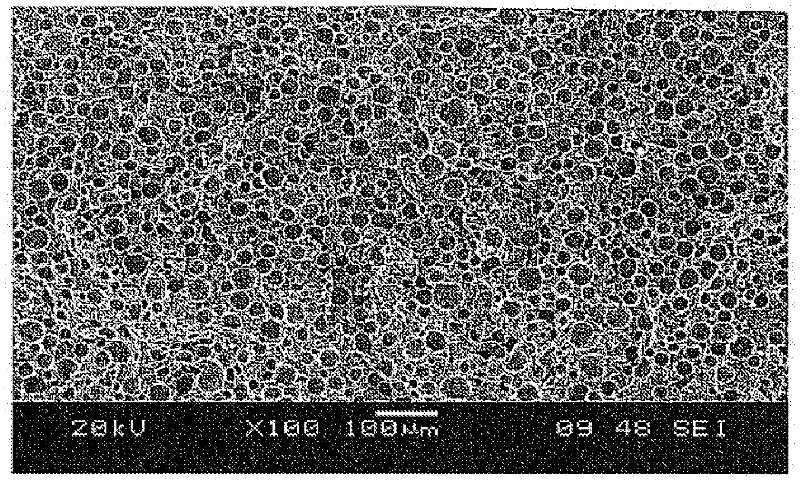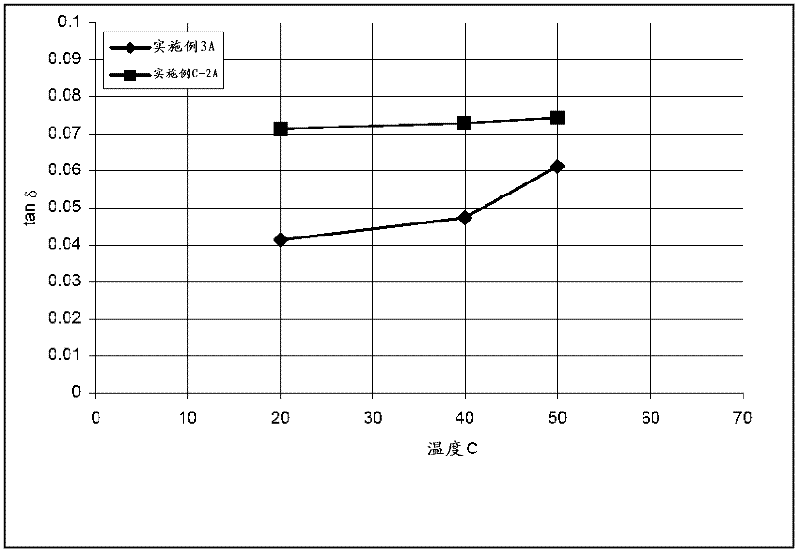Polishing pad, polyurethane layer therefor, and method of polishing a silicon wafer
A polyurethane layer, polishing pad technology, applied in the field of 20 to 200 micron pores, chemical-mechanical polishing pads, can solve problems such as increased surface roughness, undulation damage, chemical properties of CMP pads and mechanical structure deterioration
- Summary
- Abstract
- Description
- Claims
- Application Information
AI Technical Summary
Problems solved by technology
Method used
Image
Examples
Embodiment 1
[0123] Polyurethane layers were prepared by the method described above using the formulations shown in Table 3.
[0124] table 3
[0125] Example 1
components
number of copies
Part A
PTMEG
60.60
MP diol
13.70
13.41
Surfactant
1.88
Catalyst-1
5.81
PTFE No.2
4.61
Total, Part A
100.01
OH#
284
Part B
94.46
total number of copies
[0126] Materials prepared according to this formulation are rigid microcellular high modulus polyurethanes. For Example 1, the M of the foamed cured polyurethane C (Molecular weight between crosslinking points) is equal to 4521.33.
[0127] To test the material for CMP polishing, a polishing pad made from the formulation of Example 1 (Example P-1) was used for copper planarization, which was then compared to a conventional IC1000 CMP pad made by Rohm and Haas . T...
Embodiment 2
[0141] Different formulations containing hydrophobic particles were prepared. figure 1 shows a scanning electron microscope (SEM) of a polyurethane material prepared generally according to the examples described herein without the use of PTFE microparticles, figure 2 A comparable formulation using PTFE microparticles is shown. The effect of the PTFE microparticles in the polyurethane foam was to produce smaller and more consistent cells based on the SEM images.
[0142] Measured using the above surface energy test figure 2 The surface of the polyurethane material in the surface. The results of contact angle (CA) and surface energy are shown in Table 6.
[0143] Table 6
[0144]
[0145] Therefore, it is believed that the presence of hydrophobic particles reduces the surface energy of the polyurethane material. In forming a CMP polishing pad, the resulting surface can be abraded, which can change the measured surface energy of the polyurethane.
Embodiment 3-6
[0147] These examples illustrate the tuning of the modulus properties of polyurethane materials for CMP polishing by varying the concentrations of the individual components of the reaction mixture used to form the polyurethane materials. Top pads based on the two formulations shown in Table 7 were prepared.
[0148] Table 7
[0149] Example 3
Example 4
Material
number of copies
number of copies
Part A
PTMEG polyol
66.41
63.41
MP diol
7.89
10.89
13.41
13.41
Surfactant
3.76
3.76
Catalyst-2 *
5.81
5.81
PTFE No. 2
4.61
4.61
Total Copies, Part A
101.89
101.89
OH#
280
315
Part B
93.01
106.65
[0150] * dilute with polyol
[0151] The microporous topsheet prepared according to Example 3 was similar to the formulation of Example 1 above...
PUM
| Property | Measurement | Unit |
|---|---|---|
| Density | aaaaa | aaaaa |
| Median particle size | aaaaa | aaaaa |
| Median particle size | aaaaa | aaaaa |
Abstract
Description
Claims
Application Information
 Login to View More
Login to View More - R&D
- Intellectual Property
- Life Sciences
- Materials
- Tech Scout
- Unparalleled Data Quality
- Higher Quality Content
- 60% Fewer Hallucinations
Browse by: Latest US Patents, China's latest patents, Technical Efficacy Thesaurus, Application Domain, Technology Topic, Popular Technical Reports.
© 2025 PatSnap. All rights reserved.Legal|Privacy policy|Modern Slavery Act Transparency Statement|Sitemap|About US| Contact US: help@patsnap.com



